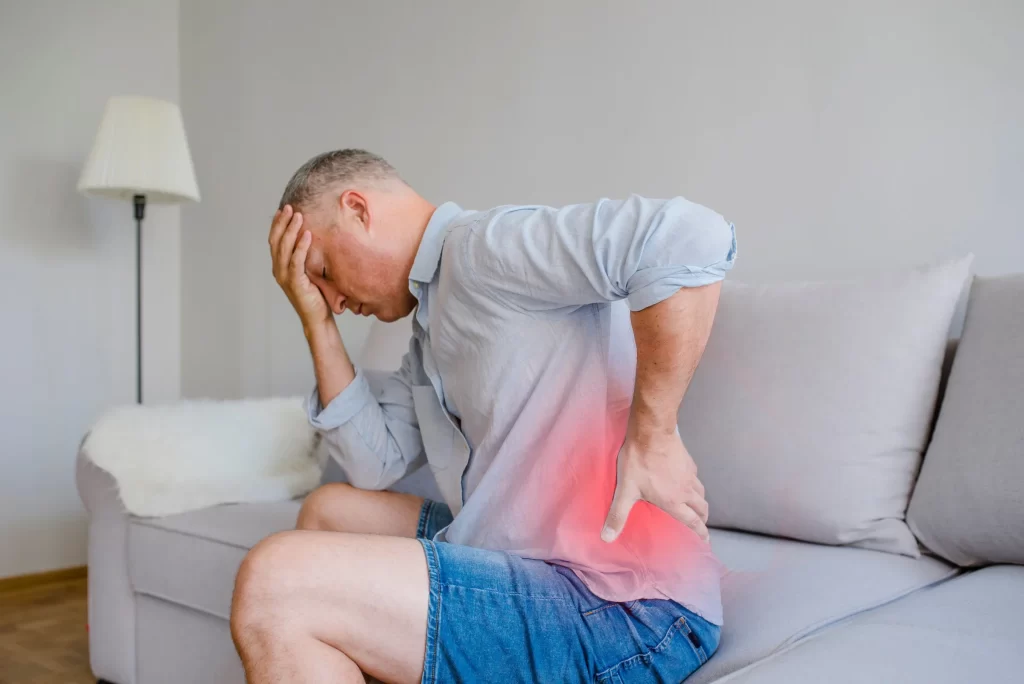Hip pain
Hip Injuries and Pain
The hip is a vital joint responsible for movement, balance, and stability. However, injuries and pain can arise from overuse, trauma, poor posture, or conditions like arthritis. With the right approach, physical therapy can help restore mobility, alleviate discomfort, and strengthen the hip to prevent future issues.
Under the expert care of Prof. Dr. Hafiz Muhammad Asim, we provide specialized treatment for various hip conditions, including:
Arthritis
Bursitis
Labral tears (cartilage damage around the hip socket)
Femoroacetabular impingement (FAI) (abnormal bone growth affecting movement)
Hip flexor strains
With a patient-focused approach, Prof. Dr. Hafiz Muhammad Asim designs customized treatment plans to reduce pain, restore function, and support long-term recovery, ensuring optimal results for every patient.

Conditions
Hip injuries we treat
Arthritis
Hip arthritis is a leading cause of hip pain, resulting from inflammation that wears down the cartilage responsible for cushioning the hip joint. As the cartilage deteriorates, movement becomes more painful and restricted.
Common Symptoms of Hip Arthritis:
Gradual worsening of pain
Reduced range of motion
Stiffness and discomfort
Treatment focuses on strengthening muscles and improving flexibility to reduce pressure on the hip joint. A personalized therapy plan includes targeted exercises and education to enhance mobility and manage pain effectively.
Bursitis
Hip bursitis occurs when the bursae—fluid-filled sacs that cushion bones, muscles, and tendons—become inflamed, leading to pain and discomfort. This condition often develops due to repetitive movements that overwork the hip joint and is most commonly seen in older women.
Treatment Approach
A personalized therapy plan focuses on strengthening the gait, hip, and core muscles to reduce strain on the hip joint, improve mobility, and alleviate pain.
Labral Tear
A hip labral tear occurs when the ring of cartilage surrounding the hip socket becomes damaged. This condition is most common in athletes and individuals who engage in repetitive twisting motions.
Common Symptoms:
Clicking or locking sensation in the hip
Hip pain and discomfort
Stiffness and limited mobility
A personalized treatment plan will focus on pain relief, mobility restoration, and strengthening exercises to help you recover and return to your favorite activities.
Femoroacetabular impingement (FAI)
Femoroacetabular impingement (FAI) occurs when excess bone develops on the hip joint, leading to an irregular shape. This causes improper joint movement, resulting in friction between the bones.
Common Symptoms of FAI:
Hip pain
Stiffness
Limited range of motion
FAI often develops due to abnormal bone growth during childhood. Treatment focuses on improving mobility, reducing pain, and enhancing joint function through a personalized physical therapy plan.
Hip Flexor Strains
A hip flexor strain occurs when the hip flexor muscles are overstretched or torn. The severity is classified into three grades:
Grade 1: Mild stretching with microscopic tears
Grade 2: Partial muscle tearing, causing moderate pain and weakness
Grade 3: Complete muscle rupture, making it difficult to bear weight
Common Symptoms:
Visible muscle deformity
Bruising and inflammation
Pain in the front of the hip or groin
Discomfort when climbing stairs
To ensure a full recovery and prevent future injuries, our physical therapists will develop a personalized treatment plan tailored to your symptoms and diagnosis, helping you regain strength and mobility.